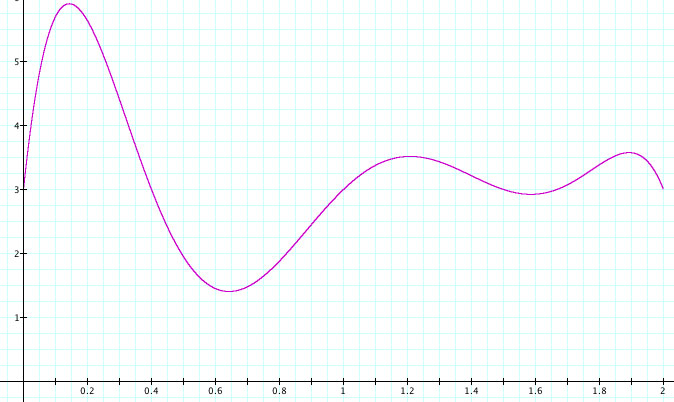Riemann Sums
- In physics, the idea of work is more than "to exert effort". It means to actually move something -- that is, it is about accomplished work. Work is accomplished by applying a force over some distance (this is why something has to actually move). So, the unit of work involves a force and a distance. One unit of work is to apply a newton over a distance of 1 meter, or the Newton-meter (N-m). (A Newton is about 1/5 pound force and a meter is a little longer than 3 feet. So a N-m is about 3/5 of a pound-foot.)
- Matese Wirken owned a towing company. He charged according to the amount of work that it took to haul the object from one place to another. His rate is $0.00001 per N-m, or $0.01 per N-km.
- Matese devised a "Newton meter" (sorry) that produced the force presently being applied to move his customer. He had it hooked to his odometer to produce a graph of the two (force and distance) together. He also had a "charge meter" (like in a taxi cab) that showed the current total charge. It was unlike a taxi cab's meter in that it only kept track of force and distance. The charge meter keeps track of the total charge every 0.00001 km but updates its display only every 0.1 km.
- Here is a graph from the initial part of Matese's most recent tow job. The vertical axis is in 1000N; the horizontal axis is in kilometers.
- Reproduce an approximation to what his charge meter displayed as he drove along. Give it in the form of a table. (Do this by hand, on paper and submit your paper.) Explain your table.

- Use Graphing Calculator and Riemann sums to produce a graph of the volume of water in a conical storage tank that is 25ft high and 30 feet wide at the top. Express the volume as a function of the height of the water above the tip of the cone.
Explain your solution.
3. a. A particular ball has a vertical velocity of cos(x) ft/sec, where x is in seconds and x=0 is a reference point in time. (That is, x is NOT the number of seconds the ball has been bouncing.) Explain what roles "a", "b", "k", "p", and "x" are playing in the following Riemann sum.
![]()
b. Explain what the entire expression represents.
c. (Extra Credit)
Do functions defined like this

(where d is an arbitrary interval size) always produce a step function? If so, why? Why do functions defined as in (a) never produce a step function?
(Click here for a GC file containing a general definition.)
4. Hexane is a gas used for industrial purposes. Clentice Smith of Cargill Corp., Bloomington, IL requested a graph that will give the approximate volume of hexane (measured in cubic inches) held by the tank shown in Figure 1. Use Graphing Calculator and Riemann sums to produce such a graph. Express the volume of hexane as a function of the height of the water (measured in inches). Explain your solution.
Assumptions
• The face of the tank is a disk (i.e., a region bounded by a circle)
• the shape of the tank is cylindrical
• the hexane sits atop the water
• the dimensions of the tank are as shown
• a hole in the tank resides 18" vertically from the top of the tank
• the hexane always reaches the bottom edge of the hole.

Figure 1
(Extra Credit)
5. a. Find two applications of the integral in a calculus text, not having to do with area or volume, for which these methods are appropriate. Solve them using these methods. (Beware, the answer the textbook seeks will probably be a number instead of a function. So, you will give a more general answer than they request, but you can still answer their question.)
b. Discuss how the question might need to be changed and how the situation might need to be re-framed to make Riemann sums a reasonable method.